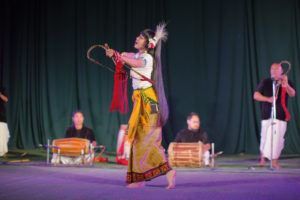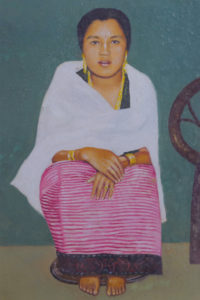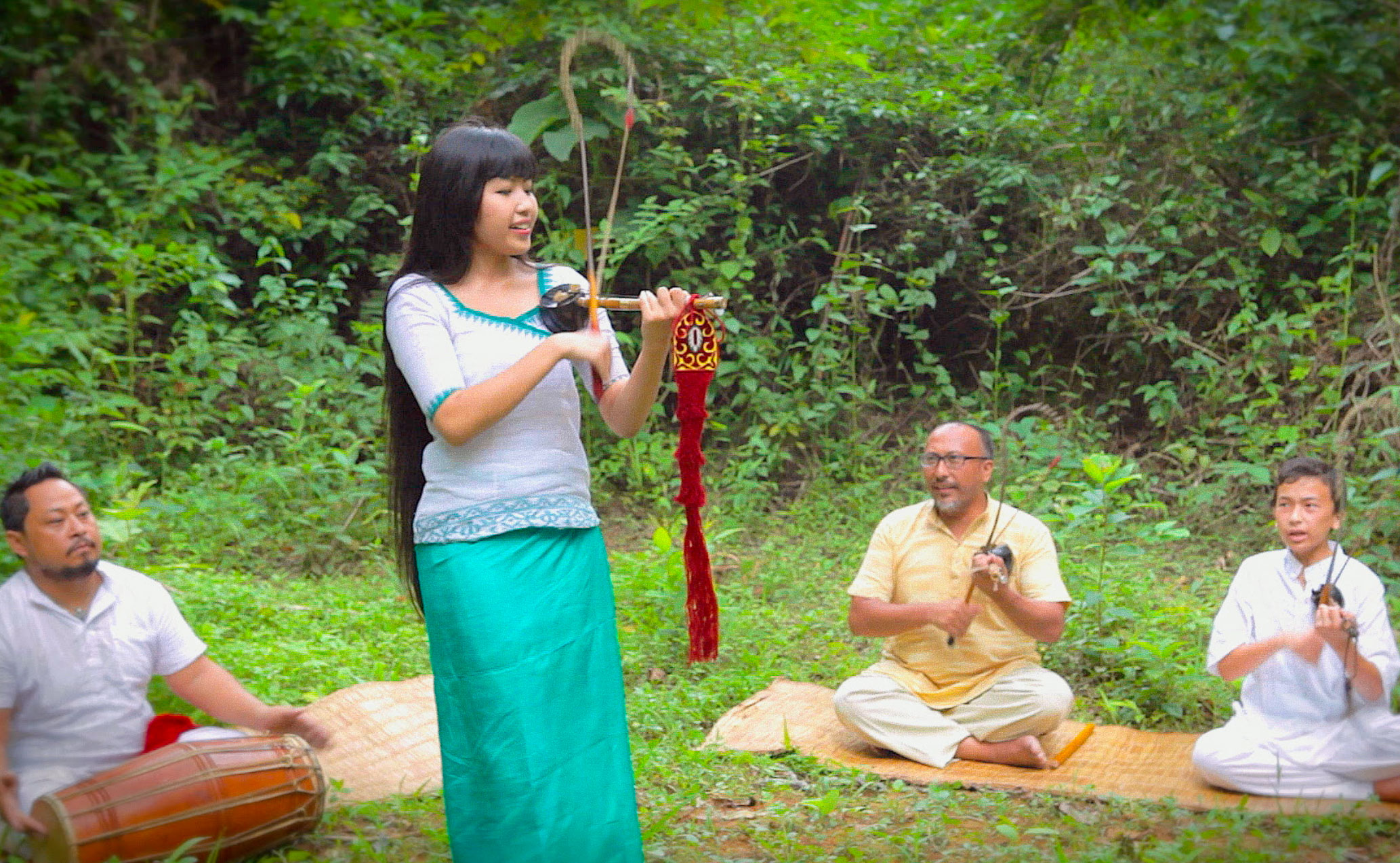Manipuri folk singer, Mangka Mayanglambam performs the traditional Meitei performance style known as Moirang Sai (Tales from Moirang Khamba Thoibi).
Mangka performs the two most popular sections of the repertoire, Kwakta Lamjel (The Tournament Race at Kwakta). The set is produced by Seven Sisters Music, with direction by Laihui and Seven Sisters Music. Performed with members of Laihui Ensemble, Mayanglambam Mangansana and Marjing on Pena, Michael Ngangom. on pung. The set was filmed and recorded in Phayeng forest, West Imphal, June 2014.
Mangka and members of Laihui perform the Kwakta Lamjel (The Tournament Race at Kwakta) which is one of the most popular sections of Moirang Sai and the Khamba Thobi story.


Moirang Sai is a traditional Manipuri performance style that tells the story of Khamba and Thoibi. The tales of the hero Khamba and the princess Thoibi. Their story is the cultural epic of Manipur. The story is based on what are believed to be actual people who lived 600 to 700 years ago in the former kingdom of Moirang. Comparable to Romeo and Juliet, and Tristan and Isolde, with an equal depth of characterization it is a true epic that can span over 120 hours of performance. Its episodes of heroic chivalry, strong female characters, social political intrigue and etiquette, are set in the medieval royal courts and informs the identity and history of the folk of Manipur. Truly if one wants to know the spirit of Manipur the story of Khamba and Thoibi can reveal its inner character.
In the 1990s and 2000s the popular interest in the traditional Meitei performance arts was at an all time low and many of the traditional styles including Pena Phamshak, Khongjom Parba, and Moirang Sai, became truly endangered art forms. The reasons for this are many, and include the popularity of Western rock and mainstream Hindi and Bengali music. Also public tastes had shifted away from traditional forms to modern productions of live folk theater. Affordable transistor radios, television, social unrest, and the general loss of interest by the youth, were also contributing factors. In the case of Moirang Sai, by the late 2000s there may have been only two or three artist who were still actively performing. In recent years there has been a small revival of interest in the traditional arts. And a handful of next generation performers are again learning the form of Moirang Sai. This all reflects a resurgence of interest by the people of Northeast India in their traditional cultures which include dance and music. For many this is seen as a hopeful sign for the preservation of the traditional arts of Manipur.
the Meitei, the story of Khamba Thoibi is considered the most authentic inspiration for it’s traditional dance and performing arts. The legend predates the import of Vaishnavism and the Hindu conversion of Manipur by 100s of years. So it is held as the true indigenous source for artistic works.
The heroic adventures of the love lorn pair are known to every Meitei. The story has captured the imagination to such a degree that it is ingrained into the vocabulary. A beautiful woman is referred to as “Moirang Thoibi” and chivalry is synonymous with “Khamba”. The stories romantic ideals and heroics still inspires the popular imagination in song, dance, theater, film, artwork, and even fashion.
Moirang Sai became fully developed only recently in the period after World War Two. In the 1950s through the 1980s the form held great popular appeal as entertainment for social gatherings and weddings. The main stylist and pioneer of Moirang Sai is the renowned Meitei traditional singer Ima Langathel Thoinu. It was Ima Thoinu who solidified the form and innovated a theatrical woman’s performance with Meitei singing and pure Meitei Jagoi dance. She became an extremely popular singer performer throughout the 1960s to the 1990s. In the era of cassette tapes she was a phenomenal best seller. In the 2000s and following years Moirang Sai lost its audience and nearly became extinct. By providence in the last 10 years Ima Thoinu took on a few students who were wishing to learn the form. It is through these students that Moirang Sai has been kept alive.
Currently Moirang Sai is reaching new popular heights in Manipur due mostly to Ima Thoinu’s most famous protégée, the traditional folk singer and artist Mangka Mayanglambam of Laihui. Mangka, with her charismatic performance style has infused traditional Manipuri music with new found energy and is making it popular with the youth once again for the first time in decades.
Recorded and edited by Byron Aihara for Seven Sisters Music, at Phayeng village forest, West Imphal. We would like to extend a special thank you to the Khullakpa’s (Village chiefs) of Phayeng, Khullakpa Roton and Khullakpa Toyai for giving us permission to film in Phayeng. Copyright Byron Aihara and Laihui.
